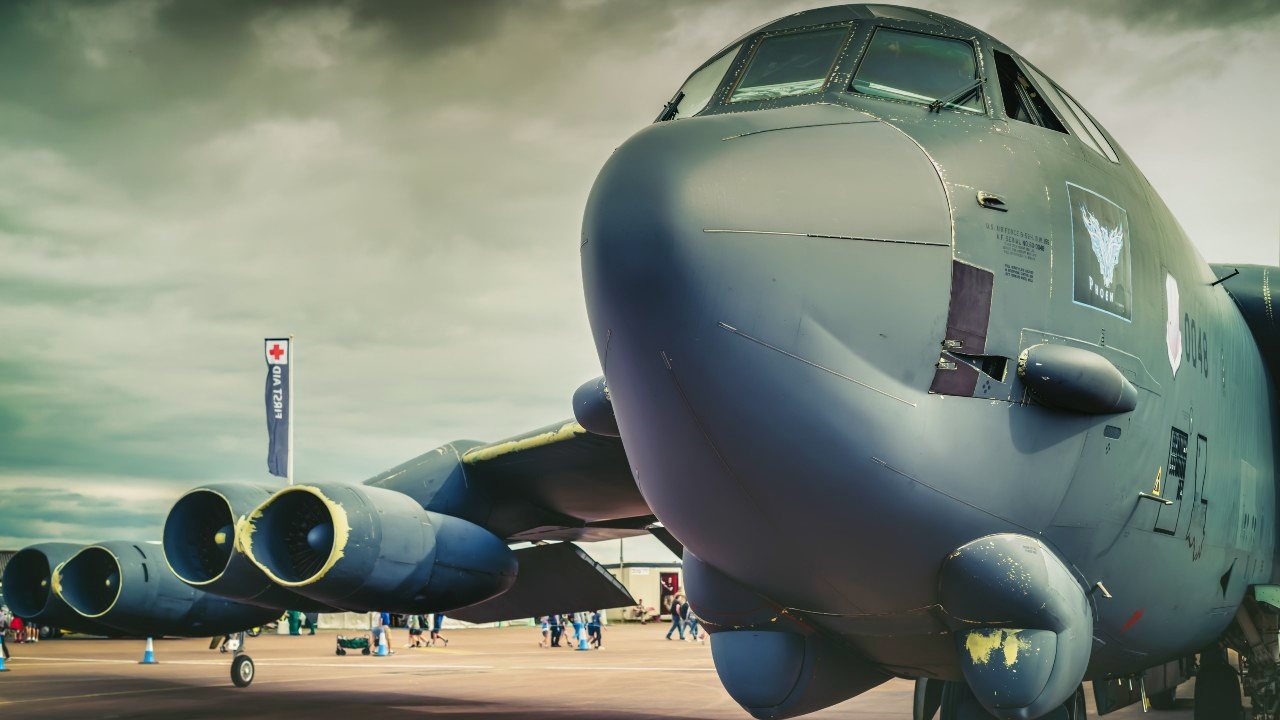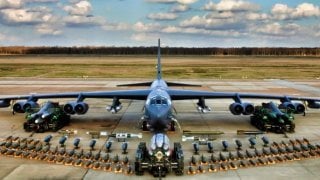Ready for War: Why B-52 Stratofortress Bombers Landed at a Civilian Airport
The pair of B-52H aircraft from the 20th Bomb Squadron (BS) were practicing landing at non-military airfields to demonstrate their ability to respond to strategic attacks.
Travelers at Chennault International Airport, outside of Lake Charles, Louisiana, were treated to a rare sight as two United States Air Force B-52 Stratofortress bombers landed at the civilian airfield. It wasn’t due to an emergency nor were there any problems at Barksdale Air Force Base (AFB), located some 200 miles away—and rather it was part of Bayou Vigilance, an exercise aimed at increasing the readiness and lethality of the 2nd Bomb Wing (BW).
The pair of B-52H aircraft from the 20th Bomb Squadron (BS) were practicing landing at non-military airfields to demonstrate their ability to respond to strategic attacks. As part of the exercise, the wing tested its ability to operate in austere environments by landing and taking off at the civilian airfield.
“When it comes to nuclear war, all bets are off and we need to be prepared to adapt to the current situation,” said Lt. Col. Jared Patterson, 20th BS commander.
“By demonstrating our ability to land at a civilian airfield, we’re demonstrating our ability to conduct operations,” added Patterson. “We are demonstrating a capability, and that capability is to land a B-52 anywhere across the globe. So yes, we’re doing it close to home this time around, but this proved we can do it anywhere around the globe.”
Though the bombers may be able to travel “anywhere around the globe,” it should still be noted that the B-52 can’t land just anywhere. As reported by Air & Space Forces magazine, the 159-foot-long B-52 still requires runways that are long, wide, and strong enough to support its weight, and those are not always found at civilian airports.
Ongoing Vigilance
Though the sight of two B-52s may have surprised some travelers, it also required close coordination between the 2nd BW and Chennault International Airport personnel. Yet, it highlighted that the 2nd BW can quickly partner with local authorities and the individuals who oversee airfield operations in order to execute the mission.
“The 2nd BW and Chennault International Airport partnership is significant because it provides the wing an alternate location for training and operations, while at the same time demonstrating the viability and importance of the Department of Defense-civilian relationship,” explained Kevin Melton, Chennault International Airport executive director. “It shows we are a team founded on similar core values, which at the end of the day ensures our nation is protected by a formidable fighting force second to none.”
The landing at the civilian airport also marked the end of this year’s first iteration of the wing’s Bayou Vigilance exercises, which began on April 3. It is held multiple times a year to enable bomber air and ground crews a chance to practice responding quickly to a crisis.
“The mission we demonstrated is not just a 2nd Bomb Wing mission,” said Colonel Michael Maginness, 2nd Bomb Wing commander. “It is a national mission that we have the honor of executing on behalf of the United States, our Allies, and partners.”

As routine training missions, the Vigilance series exercises have an important role in ensuring the safety, security, and dependability of the bomber leg of the U.S. nuclear triad.
“This exercise demonstrated the 2nd Bomb Wing’s ability to rapidly mobilize airpower, stand up nuclear security operations when called upon, and execute the alert mission for an extended period of time,” added Maginness. “With every rep, the Wing is laying the groundwork for future capabilities. The decisions and culture our Airmen put in place now are the cornerstone of Barksdale’s future.”
Author Experience and Expertise: Peter Suciu
Peter Suciu is a Michigan-based writer. He has contributed to more than four dozen magazines, newspapers, and websites with over 3,200 published pieces over a twenty-year career in journalism. He regularly writes about military hardware, firearms history, cybersecurity, politics, and international affairs. Peter is also a Contributing Writer for Forbes and Clearance Jobs. You can follow him on Twitter: @PeterSuciu. You can email the author: [email protected].


